Volkswagen is bringing its compact car legacy into the electric age with the ID.2all prototype. This all-electric vehicle, essentially an electric version of the iconic Polo, is priced below €25,000 and represents a significant step in VW’s strategy to launch ten new electric models by 2026. The production version will reach European markets in 2025, based on the MEB Entry platform.
The timing is particularly significant as 2025 marks the 50th anniversary of the Polo, one of Volkswagen’s most successful models. The ID.2all serves as a fitting electric successor to this legacy, carrying forward the Polo’s ethos of accessible, practical transportation while embracing zero-emission technology.
The ID.2all prototype is showcased in a striking blue exterior that perfectly highlights its clean, horizontal lines and minimalist approach to design. This marks a departure from the more rounded styling of current ID models, suggesting a new design direction for Volkswagen’s electric lineup. The vehicle’s name—ID.2all—indicates its positioning in the lineup, though the final production model might receive a different name entirely, possibly even incorporating the Polo branding.
Thomas Schäfer, CEO of Volkswagen Passenger Cars, emphasises: “We are transforming the company with the clear objective of making Volkswagen a genuine Love Brand. The ID.2all shows where we want to take the brand: close to the customer, top technologies and fantastic design.”
Imelda Labbé, Member of the Brand Board of Management for Sales, Marketing and After-sales, adds: “We are transferring the typical Volkswagen virtues to the new world of mobility: top quality and workmanship, outstanding software and digital services with genuine added value. The focus here is always on the needs and requirements of our customers.”
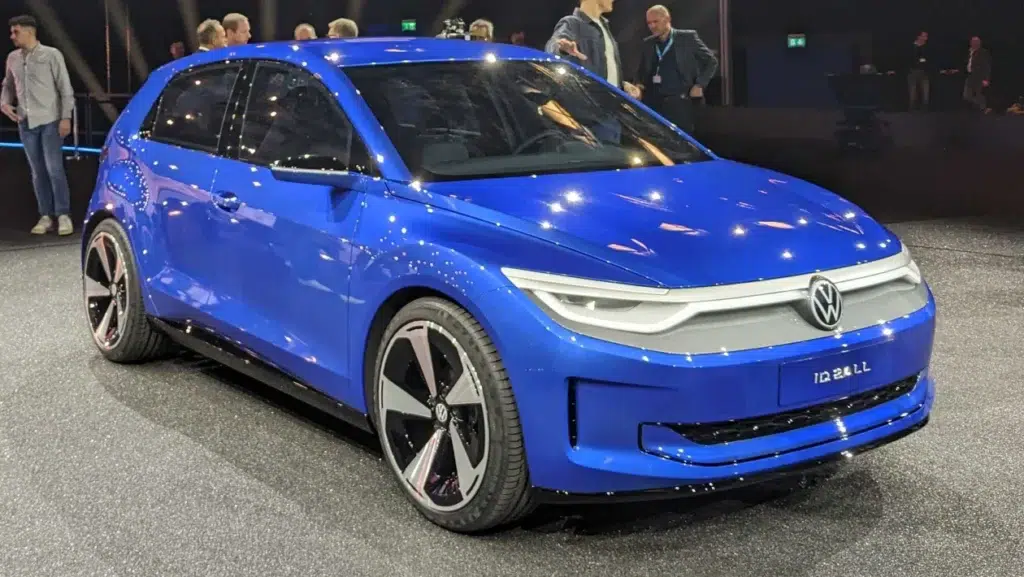
Technical Specifications
The ID.2all marks a departure from other ID models by featuring front-wheel drive instead of rear-wheel drive, bringing it in line with the Polo’s traditional drivetrain layout. Kai Grünitz, Member of the Brand Board of Management responsible for Development, explains this shift: “The ID.2all will be the first MEB vehicle with front-wheel drive. We are exploiting the great flexibility offered by our modular electric drive platform and will set new standards in terms of technology and everyday usability with the MEB Entry platform.”
Its electric motor delivers 166 kW (226 PS), enabling acceleration from 0 to 100 km/h in under 7 seconds. The calculated WLTP range reaches up to 450 kilometres (280 miles), addressing range anxiety concerns that often deter potential EV buyers. This impressive range figure is particularly noteworthy for a vehicle in this price segment, making it competitive even against much more expensive electric models and providing significantly more range than the average daily commute requires.
At DC quick-charging stations, the battery charges from 10% to 80% in approximately 20 minutes. Home charging supports up to 11 kW. The entry model will feature a battery slightly under 40 kWh (net), utilising LFP (Lithium Iron Phosphate) chemistry that offers greater longevity over the vehicle’s lifetime but slightly slower charging. The larger 56 kWh option will use NMC (Nickel Manganese Cobalt) chemistry, optimised for faster charging and greater energy density. This two-tier battery strategy allows Volkswagen to hit the critical sub-€25,000 price point while still offering options for customers with different priorities, much as the Polo has traditionally offered multiple engine options to suit different needs.
Dimensions and Design
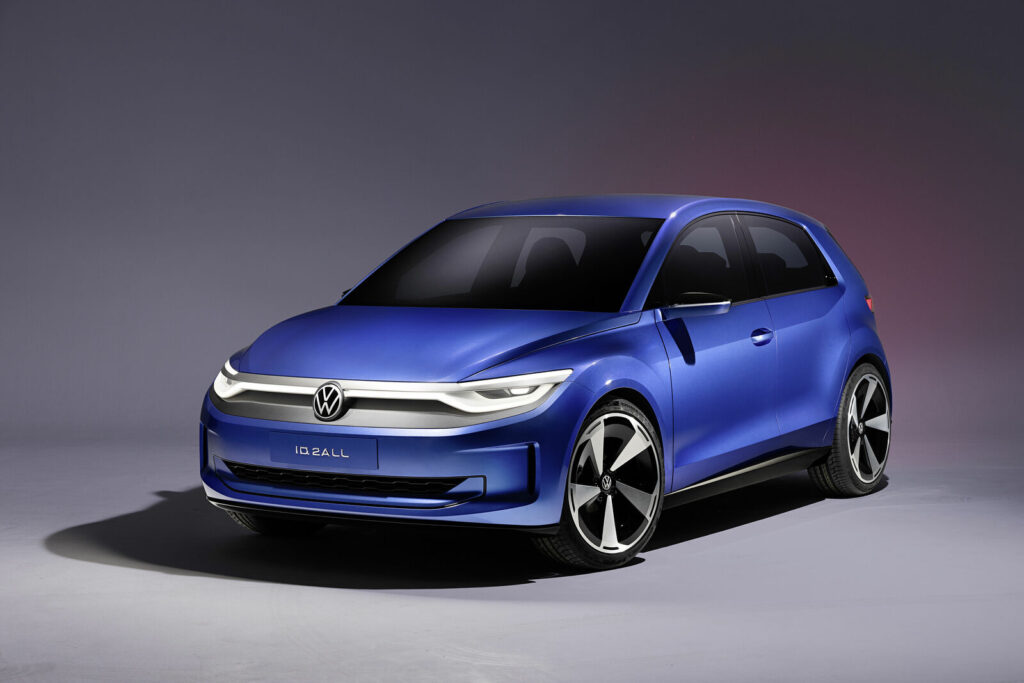
Measuring precisely 4,050mm long, 1,812mm wide, and 1,530mm tall, the ID.2all perfectly matches the size of a Polo, reinforcing its position as the electric successor to Volkswagen’s beloved compact car. The prototype can accommodate wheels up to 20 inches, enhancing its sporty appearance. A sportier GTI version is also planned, with acceleration figures around 6 seconds compared to the standard model’s 7 seconds—continuing the Polo GTI tradition in the electric era.
Andreas Mindt, who became Head of Design at Volkswagen in February 2023, developed a new design language for the brand based on three pillars: stability, likeability, and excitement. The ID.2all features a distinctive C-pillar design originally developed for the first Golf, creating a visual connection to VW’s heritage while establishing a fresh identity for the electric Polo successor.
“We are transferring the DNA of our icons into the future,” explains Mindt. “The ID.2all is an homage to the Beetle, Golf and Polo.” This approach is particularly meaningful as the Polo celebrates its 50th anniversary, with the ID.2all poised to carry the nameplate’s legacy into the next half-century.
Return to Physical Controls
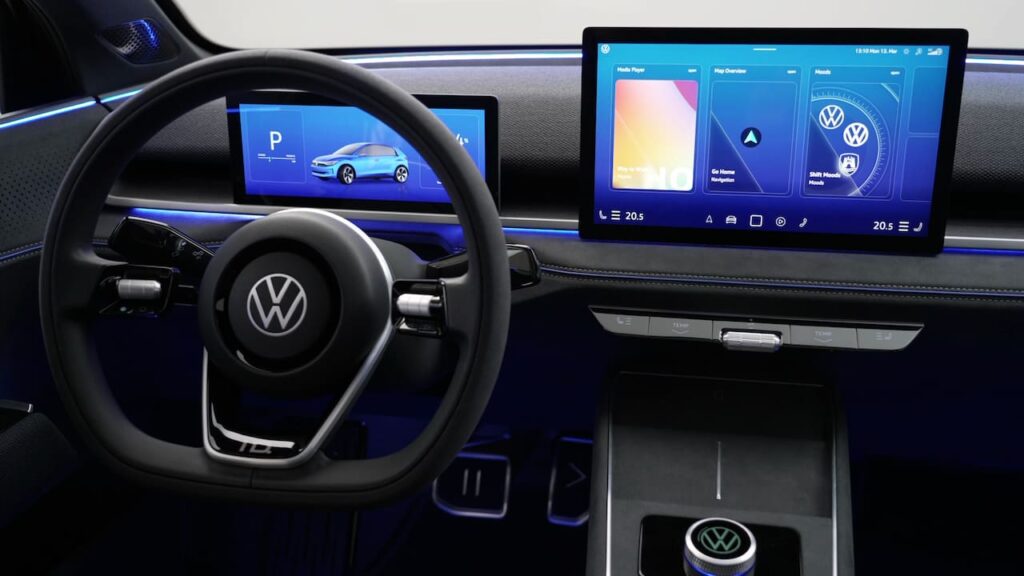
Perhaps the most notable interior change is Volkswagen’s return to physical controls. After customer feedback criticised touch-sensitive interfaces in current ID models, the ID.2all features proper knobs for climate control and volume adjustment.
The interior includes a 12.9-inch infotainment display with a new menu structure and a separate air conditioning control panel with illuminated buttons. A small thumbwheel in the centre adjusts volume. The digital cockpit measures 10.9 inches and works alongside a head-up display.
The steering wheel has been redesigned with physical buttons instead of touch-sensitive controls, featuring two thumbwheels and two buttons on each side—simple and intuitive.
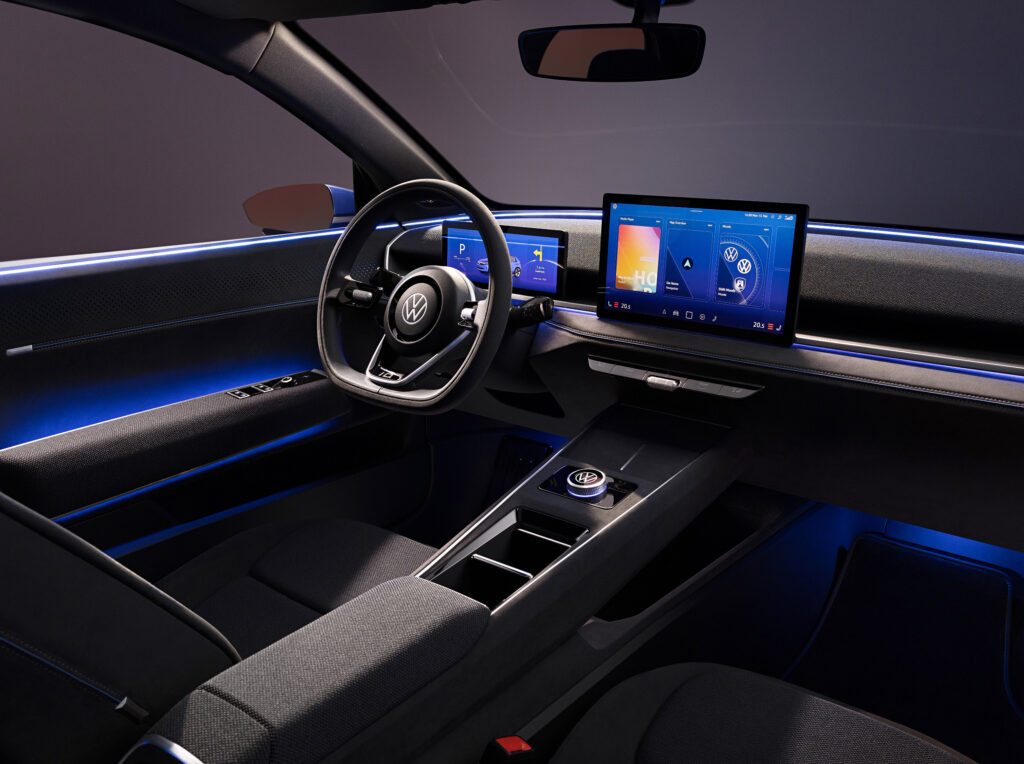
Premium Materials and Practical Features
Despite its affordable price point, the ID.2all doesn’t compromise on quality. The interior features microfiber door inserts with perforation, fabric dashboard covering with blue stitching, and improved seat designs with micro-fiber elements.
Several innovative storage solutions maximise practicality. The luggage compartment offers 440 litres, expandable to 1,330 litres with rear seats folded. A rectangular storage box under the double luggage compartment floor provides additional space for shopping bags.
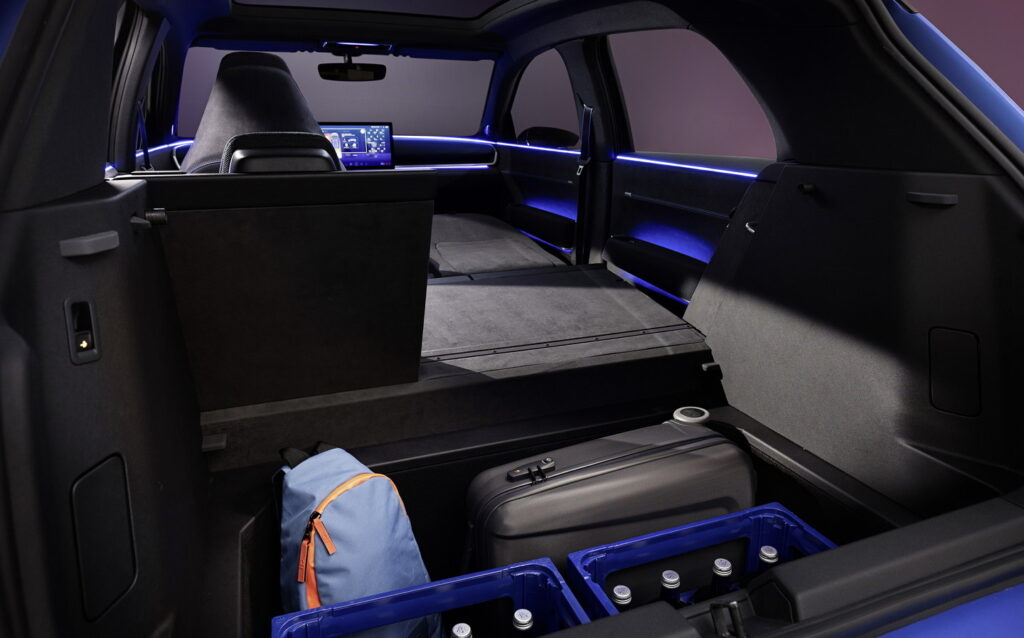
The rear bench seat can be folded up in one motion, revealing a 50-litre storage area specifically designed for charging cables, first-aid kits, and larger devices like laptops, which can also be charged there. When both rear seats and the front passenger seat are folded, they create a continuous 2.2-metre load area.
Advanced Technology
The ID.2all will feature technologies typically found in higher-class vehicles, including Travel Assist for partly automated driving, IQ.LIGHT LED matrix headlights, 3D LED tail lights with a horizontal LED strip, and Park Assist Plus with memory function.
Multiple USB-C interfaces (45 watts) throughout the cabin power devices, while magnetic holders with inductive charging function in the front seat backrests accommodate rear passengers’ smartphones. A 230V socket can power larger devices.
Market Positioning and Future Outlook
The ID.2all represents Volkswagen’s commitment to democratising electric mobility, particularly as an electric successor to the Polo. Kai Grünitz, Board Member for Development, states: “Thanks to the variable MEB platform, customers will benefit from state-of-the-art technologies in the €25,000 price class. Volkswagen is once more democratising progress.”
With this expanding lineup, Volkswagen is targeting an electric vehicle share of 80% in Europe by 2030—up from their previous 70% target. This aggressive electrification strategy will give VW the widest range of electric vehicles compared to its competitors, allowing it to cater to virtually every segment of the market.
For consumers waiting for an affordable electric Polo equivalent, the ID.2all demonstrates that the transition to electric mobility doesn’t require compromise. With Polo-like dimensions but Golf-like interior space, practical storage solutions, and impressive range, it represents a compelling entry point into electric mobility for European drivers looking to make the switch in 2025 – 2026.
The ID.2all’s timing is particularly significant as it will arrive when many European countries are accelerating their transition away from combustion engines. With incentives shifting from luxury EVs to more affordable options, and charging infrastructure continuing to expand, the ID.2all could be perfectly positioned to capitalise on a market primed for mass EV adoption.
As Volkswagen returns to its roots with the ID.2all—offering practical, well-designed vehicles at accessible price points—it may well recapture the spirit that made the Polo and other combustion models so successful, just with a modern, electric heart.
